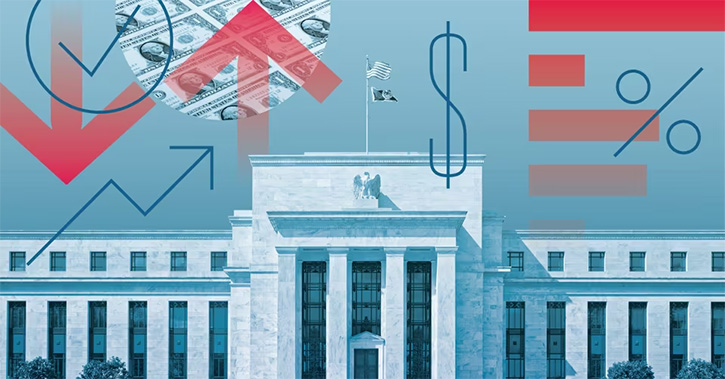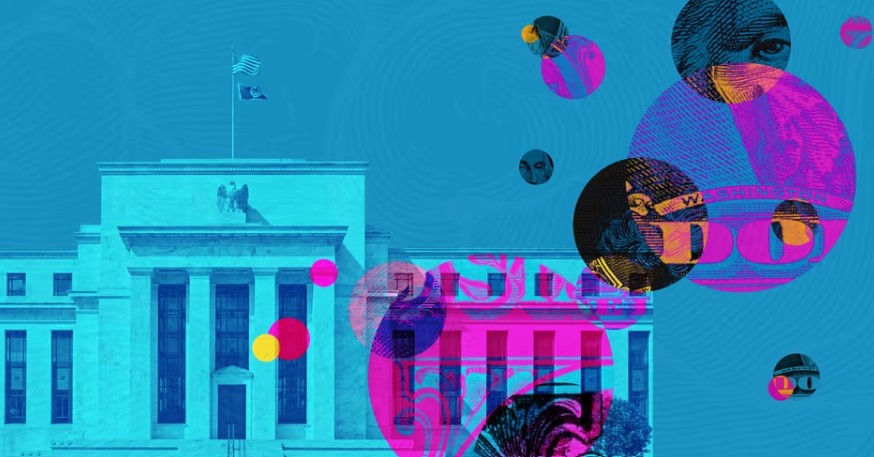Jeremy Glaser: For Morningstar, I'm Jeremy Glaser. With the Federal Reserve raising key interest rates by 25 basis points, they're finally on a path toward normalization after the extraordinary measures they took during the financial crisis.
I'm here today with Bob Johnson, our director of economic analysis, to see what impact this will have on the economy.
Glaser: Bob, thanks for joining me.
Bob Johnson: It's great to be here.
Glaser: Let's start by looking at the statement. The Fed raised short-term interest rates by 25 basis points. This was widely expected. Was there anything in the statement or in the press conference afterward that came as a surprise to you?
Johnson: The only thing is they went out of their way relatively early in the call to talk about the longer-term rates. What today's meeting was about is raising the Fed funds rate and the discount rate, and some reverse repo operations--all designed to change short-term interest rates, which is what they're usually after.
The one thing that they commented on in the meeting was about long-term rates. Remember, historically, the Fed has been concerned with short-term rates. It was all the quantitative easing programs, which was buying longer-term interest rate instruments in an attempt to bring those rates down as well. Recall that they stopped that about a year or a year and a half ago, buying more bonds. But they've been reinvesting in bonds when the bonds [they originally purchased] mature.
Well, the surprise to me in today's meeting was they announced that they would keep re-buying those bonds and keep their portfolio at the same level as it had been. And they went further to say that they're going bring the rates up pretty close to what they think is normal before they even begin to think about not investing in the bonds that mature again. And that's even before you say anything about shrinking the balance sheet. So, clearly, they're keeping what's in place on the long-term interest rate marketplace, which may explain why long-term interest rates today moved much less than short-term rates.
Glaser: Chair Yellen said in the press conference that you shouldn't think of this as that big of a deal, that maybe people are too focused on the day that interest rates actually go up. The stock market was up quite a bit on the announcement, actually. Do you think that's right, that this is a relatively unimportant announcement in the grand scheme of things for the economy?
Johnson: We've said forever that we didn't care what month they made the first rate increase. We're more interested about what they do with rates a little bit longer term. That's still not known as much, but I think that it's great to have the security of knowing that they've begun to normalize, that they're aware that certain things are heating up a little bit, and that they're beginning to react to that. That's good news.
I don't think that this quarter-point move is enough to move the needle. I'm not racing out to change my forecast because they raised rates. And even the 1% or so, which is the projection for the year ahead, their projection is about 1.4% for the Fed's fund rate, and now they've just put it up to 0.4%, so about a 1% increase over 2016 in terms of interest rates. I think even that move really won't do very much to the economy.
Just as an example, the average car loan, where the rate should move pretty much one-for-one with the rate that the Fed sets, would add probably $15-$20 to a $25,000 car loan. So, really, not a huge impact on the economy in the short run. We mentioned that mortgage rates are tied more to long-term, and they've already come back up a bit. As we mentioned, the long-term bonds ... they're going to continue to reinvest, so I won't expect to see a huge move up in the 10-year, and hence, the mortgage rates. So it won't have a big impact there, even if we see a 1% move in the next year in the Fed funds rate.
Glaser: In the short term, why do you think the stock market liked this move?
Johnson: That's an easy one. I think the market loves certainty. The market can deal very well with bad news, if they know what it is and what the schedule is, or know what can go wrong. That's fine. Markets can live with that. What the market can't live with is, "Maybe we will; maybe we won't." We've walked up to four or five of these meetings and [wondered], "Will they or won't they?" And the market goes down and down and down before the meeting, and then they announce they're not doing anything, and the market races back up again. I think that this time, the market is particularly strong because they know what the Fed is going to do. They've laid out their path to the future, and I think everybody feels pretty good about that.
Glaser: When you look at that path, do you think it's plausible that we're going to see a 1% further increase in 2016, and then further in 2017 and 2018? Do you think that long-run forecast of where they want to be, above 3% in the Fed funds rate, is a path that's attainable?
Johnson: It's probably a little bit aggressive. I think by the end of 2016, we could certainly be at 1%; the market forecasts 1.1%, and the Fed is saying with their dot plots that they think it will probably be at 1.4% by the end of 2016, which implies one rate increase of 0.25 each quarter for the next four quarters. Now, they'll obviously watch a bunch of other data, but that's the plan.
I think that probably makes sense. We're expecting inflation to come up a little bit this year, not because anything is changing much, but I don't think oil is going to go down as much anymore after a huge fall in 2014 and 2015. I don't think we're going see another year of that in 2016. So, inflation will be higher. The Fed funds rate will be higher; it all makes sense to me.
I question a little bit the 3%-3.5% by 2018. That could be a little bit high. I think inflation rates are generally lower. Growth rates are generally lower. So, what they're thinking might be normal, might instead be just a little bit high. I think that they probably will have to stop increasing rates before they get all the way to 3%. That would do a little bit of damage to the economy.
Glaser: You said you see inflation coming up in 2016. Do you think we're going to hit that 2% target? Is the Fed's projection plausible?
Johnson: I think it certainly is. Especially if you look at core inflation, we're not that far off. We're at 1.3%-1.4%. The PCE, because of some slightly different weights, the CPI is already at 1.8%, which is very close to the number, so I think it's just a matter of time until the PCE-based inflation indexes start to move up as well. On core inflation, we'll be close to 2% by the end of next year, and the reason I say that is the U.S. consumer continues to do very well, and I think services will do very well, and service inflation will be higher in 2016 than it was in 2015.
The only question is, how much will the offset be from commodities? Keep in mind that services is twice as big as commodities, and that commodities have been going down a lot; maybe they don't go down at all in 2016, and then you have slightly higher services inflation. So that lays the groundwork for a higher inflation rate, and a core inflation rate, in 2016.
Glaser: Along with this statement, we also get some economic projections from the Fed. Anything notable there?
Johnson: One thing that's interesting is they are trying to say, "We want to normalize everything, and bring it back to where it usually is." The implication is, that's a 3%-3.5% long-term Fed funds rate. But I've got to ask, in a world where generally inflation will be a little bit lower, at least in the case of the U.S., where growth is going to be more like 2% according to their very own projections longer term … if we lived in a world that was more like 3% or 4% economic growth, why should rates be that high if growth is that low? In other words, part of the interest rate calculation is, what you're giving up for something else growing, and if we're not growing as fast, can we really support a 4% Fed funds rates someday? I think not.
Glaser: Taking more of a global look, we have other central banks--the ECB, Bank of Japan--continuing to be very much in easing mode, and there are concerns about what impact U.S. rates are going to have on emerging markets. Are you concerned about this? Do you think that even if the U.S. economy can withstand higher rates over the next couple of years, that's going to have a very negative impact on the rest of the world?
Johnson: I think it can have some unforeseen consequences in emerging markets. Certainly in emerging markets, you have companies and countries that have more of their debt that's denominated in dollars. And clearly, as we raise rates, the 1% change in rates won't kill them, but if it causes a big move in the currencies because people draw out all of their money to take advantage of that slightly higher rate and the greater certainty of the U.S. economy, well, then you've got a problem. If you're paying back in dollars in that country, into a U.S. dollar that's very strong, it puts a lot of pressure on those emerging markets.
And that's one of the big concerns that's out there today, and it's a legitimate one. There are more emerging markets today with bigger reserves than we've ever had. We've got more debt priced in local currency, and not U.S. dollars, so some of that mitigates against those wars. But nevertheless, borrowing and deleveraging are the key buzzwords in developed markets, but in emerging markets, some of those are still pretty debt-fueled economies, and so there's got to be some concern there as the dollar gets stronger.
Glaser: As an investor, I've been waiting for the Fed to act for some time, and now they have. What's the big takeaway? What should be on your radar screen over the next couple of years in terms of the Federal Reserve? Is it something that you should be watching?
Johnson: I think rates will be moving up, but not dramatically so. I've mentioned inflation will have a pretty strong year in 2016, but I don't think it's because of the demographics of a slower world, an aging-world. All of that is going to tend to suppress things over the longer term, so I think we'll be looking at lower inflation, and generally lower rates--higher than they are today, but generally lower rates than people are thinking. I'm not worried. I'm not panicking and selling all of my bonds. Certainly you don't want necessarily long-duration bonds; those are things that are very volatile. But bonds will always play a role in portfolios to dampen the volatility of equity markets.
Glaser: Bob, thank you for your analysis today.
Johnson: Thank you.
Glaser: For Morningstar, I'm Jeremy Glaser. Thanks for watching.




















